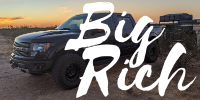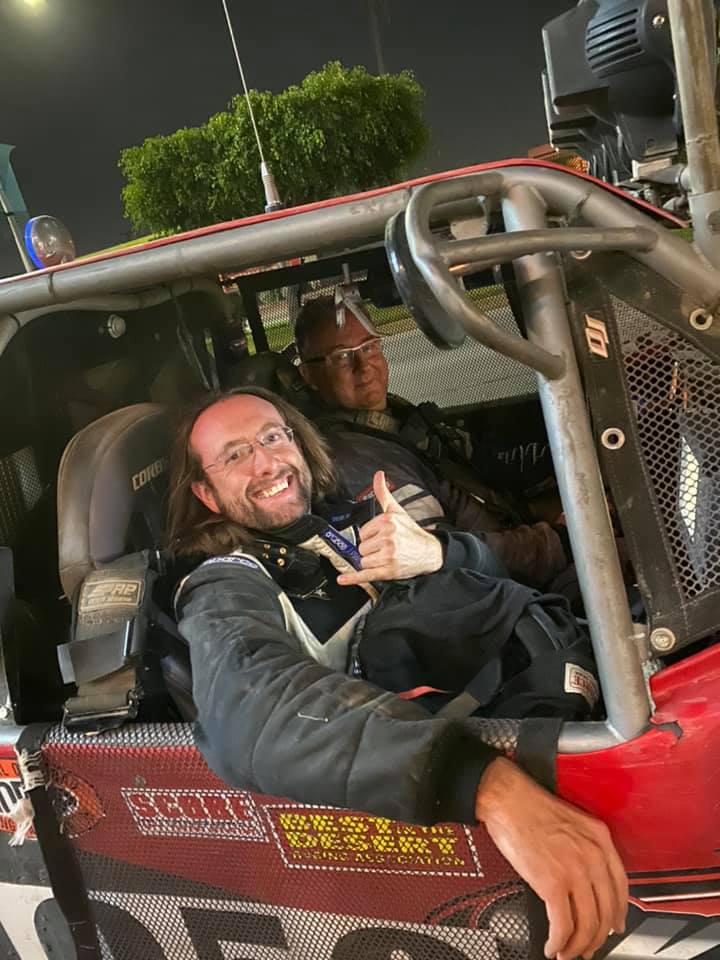First-generation car guy Bryant Blakemore talks off-road racing in Texas and Mexico. He and Big Rich go in-depth on what happens when dust and brains combine. A great conversation about TDRA and TORRA mixed in with some charity work, check out https://www.torraracing.com/charity/ for some good works heading into the new year.
Be sure to subscribe on your favorite podcast app
9:08 – I know enough Spanish to get into trouble, but not out of trouble
15:52 – I’ve taken every math class you can take, but I’ve taken every math class three times
20:52 – Lubbock is a secret hot-rod town, the car culture here is awesome
25:37 – the very top of my bucket list was to race Baja in my own truck
33:03 – when I had the opportunity to get my feet wet, I jumped in head first
41:02 – Sierra Blanca is the Ensenada of Texas
55:08 – spend a little time at some smaller local races to get your bearings
1:16:01 – I think we have four flat tires
We want to thank our sponsors Maxxis Tires and 4Low Magazine.
Transcript
[00:01:47.480] – Big Rich Klein
On today’s episode of conversations with big Rich, we have Bryant Blakemore. Bryant’s Facebook profile states that he is a first generation hot rodder, offroad racer, designer, builder, promoter and driver. I first heard about Bryant with the racing series that he was putting on in Texas, but we’ll get into all of that. And Bryant, thanks for coming on board and being part of our podcast.“`
[00:02:18.490] – Bryant Blakemore
Yeah. Thanks, Rich. I appreciate the invite to be a part of this, and I’m happy to be here.
[00:02:23.770] – Big Rich Klein
Well, let’s jump right in. You’re a Texas boy through and through. So tell us where you were born and raised.
[00:02:31.700] – Bryant Blakemore
Sure. I was born and raised down in the Rio Grande Valley. I was born in Brownsville, and I grew up in a small town called Los Fresnos, which is about 10 miles or so from South Padre Island and about 10 miles or so from the Mexican border with Matamoros and spent all my time through high school down there. And then after that, I kind of moved around. I ended back in Texas a few times, spent a little time in Wyoming and things like that. But, yeah, I grew up down in deep, deep South Texas.
[00:03:05.780] – Big Rich Klein
Okay. Yes, that’s I like that area down there. I’ve actually been through that town. We went down to South Padre Island a couple of times.
[00:03:15.080] – Bryant Blakemore
Absolutely.
[00:03:15.720] – Big Rich Klein
The last two years I’ve been wintering up in port Aransas, so we like road trips, so we’re always driving around.
[00:03:28.120] – Bryant Blakemore
Hopefully you didn’t get any speeding tickets there in Los Fresnos. That’s kind of what they’re known for.
[00:03:32.920] – Big Rich Klein
No, I’m very careful with the speed limits. Just about everywhere I go, unless I’m unless I know the area real well. Like, I know I can I know I can hustle along the roads in Texas pretty good up in the hill country, right? Not so much down there, especially on the weekends, definitely. So let’s talk about those early years. That’s a diverse cultural area, for sure.
[00:04:07.620] – Bryant Blakemore
Absolutely. Yeah. Growing up down in that area, I had a lot of influence from Mexican culture being that close to the border and we would go across frequently and eat or hang out or go to the markets down there and whatnot. So I am really thankful that I grew up in a very culturally diverse area and that led me to have an interest in traveling and seeing other places and not being afraid of going places and being out of my comfort zone. As a kid, there was a father son group out of Brownsville that every Labor Day weekend would travel down to upper Central Mexico. We would travel about 8 hours from the border south and go camping for an extended weekend. That area through there, we were in China, Leonardo, Monte, morelos down in there. We traveled to an area called Thomasopo, which is known for its waterfalls. And so we had a lot of opportunity as kids growing up to be immersed in alternative cultures that were not American cultures and not our own cultures. And I think for myself and my sister as well, I think that really broadened our view on the world and made us more comfortable with, like I said before, doing uncomfortable things.
[00:05:40.270] – Bryant Blakemore
And that being comfortable with Mexico in that kind of way really was a benefit to me. Years, decades later, when I started going to Baja, I felt at home in Baja because it reminded me of my childhood growing up and spending time in Mexico and in South Texas and things like that. So I’m really thankful for growing up in that area. I’m not sure I’ll ever move back there, but it’s a great place to be from is what I like to tell people.
[00:06:10.320] – Big Rich Klein
Right. The history down in there with the Mexican culture but also with the American Texas. I’ve read a lot of the history books and stuff about that area and the coming of Texas and all that. And it’s really interesting to read about all that and everything that the Texans went through to make that area, what they did. The part about Baja, I get that my only experience in Mexico is truly with Baja. I’ve done a little bit just south of Arizona, but never anywhere else except for like, Puerto Vallarta, the resort areas. But I love Baja, I love the people, I love the culture. It’s kind of the Wild West. We have the terrain in the Southwest, but we don’t have that kind of diversity that’s down there. And what I mean, diversity is the coastals to the mountains to all of that mixed up like Baja does in less than a day. You can be east and west coasts and that’s kind of cool.
[00:07:39.660] – Bryant Blakemore
Oh, yeah. Baja is fascinating in that way. Going north to south, you get such changes in geology and flora and fauna and everything all the way down. And then east to west, you get changes. And it’s got almost every type of ecosystem all in this one peninsula. And those of us that frequent Baja get to see that and experience it. And it’s extremely unique and amazing to go see. And I encourage everyone to go to Baja at least once. Unfortunately, mainland Mexico nowadays is a little more dangerous to go exploring and do the things that most of the crowds that we run in do in Mexico. It’s not quite the same place it was when I grew up. And I’m sad about that because there are a lot of places in Mexico that I would like to share with people, but it’s not worth the risk to go. But fortunately, we still have Baja and it’s got so much culture and history all in its own. Right. It’s an amazing place. READ MORE





